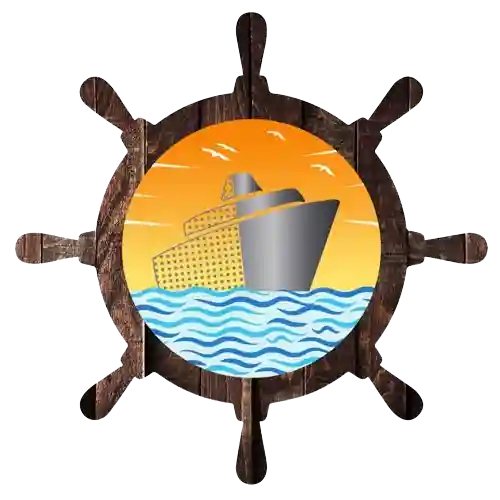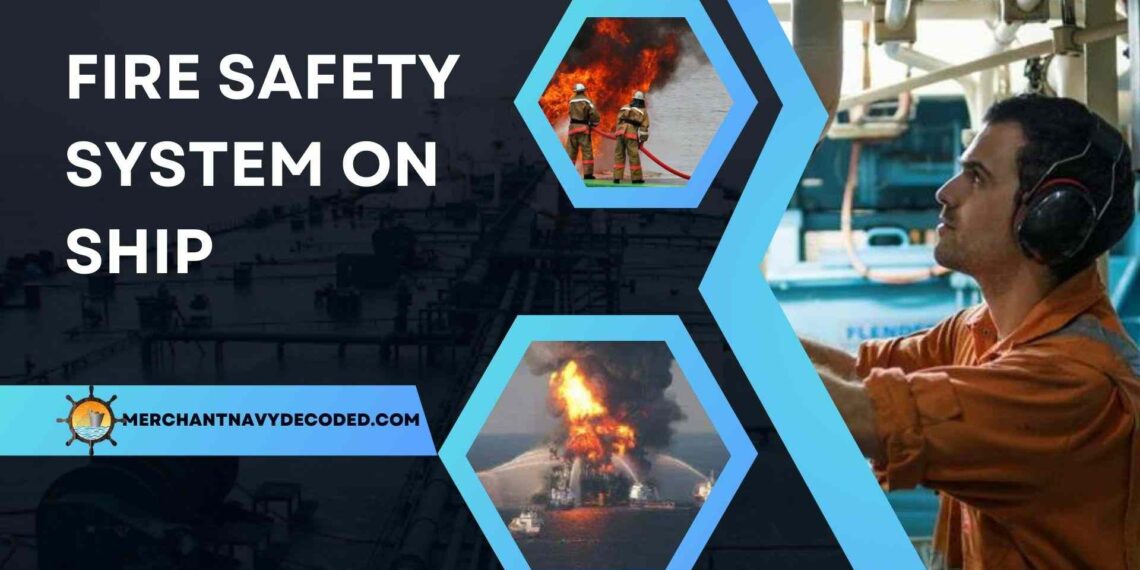Fire Safety System Code on Ships – A Complete Overview
1:- Introduction to Fire Safety System
Fire has proven to be the most feared and powerful disaster onboard Cargo Ships and Passenger Ships. This is due to the nature of fire, which is difficult to contain. Fire Safety, thus becomes an essential part of Safety Protocols and equipment onboard Ships.
The International Maritime Organization(IMO) has played a critical role in devising methods and mandatory requirements concerning Fire Detection and Protection onboard. One such mechanism is the Fire Safety System or the International Code of Fire Safety Systems.
2:- What is a Fire Safety System Code?
The FSS Code is a set of Internationally accepted guidelines that consist of technical specifications for various fire detection and fire fighting equipment onboard. It is associated with Chapter II-2 of the SOLAS Convention.
It provides International Standards for Fire Safety Systems required by the revised Chapter II-2.
The Fire Safety System Code covers the technical specifications for the following:
- Fire Fighter’s outfit and Emergency Breathing Devices
- Portable Fire Extinguishers and International Shore Connection
- Automatic Sprinkler, Fire Detection, and Fire Alarm Systems.
- Fixed Foam Fire Extinguishing and Inert Gas Systems.
- Means of Escape and Low Location Light Systems
- Sample Extraction Smoke Detection System.
3:- Fire Prevention and Fire Fighting on Ships
In case of any type of fire onboard, ‘prevention is better than cure’. Fire prevention begins with identifying the major fire hazards and taking measures to remove or reduce their potential.
Basic Principles of Fire Prevention and Fire Fighting onboard merchant ships involve:
Find the Fire: Learn of the size, location, and type of fire involved
Inform the Bridge: Sound alarm even in cases of small fires
Restrict the Fire: By closing doors, isolating fuel, and electrical supplies, and closing ventilation
Extinguish the Fire: Use the correct firefighting media type and quantity.
To realize these principles, Fire Safety Systems are employed onboard ships and these systems are regulated and standardized under Chapter II-2 of SOLAS. Major Fire Safety Systems include fire detection systems, Fire Extinguishers, Fixed Fire Fighting systems, and most importantly a well-trained crew. The human factor in the case of fire accidents has proven to be detrimental to fire detection and fire fighting abilities onboar
4:- Fire Safety System Code Purpose:
The Fire Safety System code covers a wide variety of topics and serves the following purposes:
- The primary idea of having a separate code was to differentiate the purely technical provisions from the carriage and other statutory requirements meant for administrative purposes.
- The code was developed so that it can be easily understood and implemented in a user-friendly manner by manufacturers, systems engineers, etc.
- The basic principle behind the code is increasing the safety of human life on ships.
- Providing standardized technical and engineering specifications for fire safety systems and equipment onboard.
- Ensuring Emergency Preparedness is thoroughly maintained and in case of actual emergency proper procedures are followed.
5:- Chapters of Fire Safety System
| Chapters | Name | Description |
| Chapter 1 | General definitions | All important terms are clearly defined so that it becomes easier to implement the code. |
| Chapter 2 | International shore connection | It covers the standard dimensions of the International Shore Connection, the Specification of construction materials, and associated accessories. |
| Chapter 3 | Personal protection | This chapter covers detailed technical aspects of Personal Protective Equipments such as Fireman’s outfit, Breathing Apparatus, Lifelines, EEBD, etc. |
| Chapter 4 | Fire Extinguisher | This chapter deals with the application, type approval; and detailed specifications of fire extinguishers such as Capacity, Weight, recharging, and foam applicators. |
| Chapter 5 | Fixed gas fire extinguishing system | This chapter talks about the different types of Gas Extinguishing systems like CO2, Steam, etc, including their installation and system control requirements |
| Chapter 6 | Fixed foam fire extinguishing system | Quantity of Foam, Performance Requirements, Installation, and means of Control of Fixed foam extinguishing systems are detailed in this chapter |
| Chapter 7 | Fixed pressure water and water spraying system | This chapter deals with the specifications of fixed-pressure water-spraying and water-mist fire-extinguishing systems |
| Chapter 8 | Auto sprinkler, fire detection, and fire alarm system | This chapter mentions specifications such as type of sprinkler system, operating temperatures, location of systems, and system control requirements |
| Chapter 9 | Fixed fire detection and alarm system | This chapter describes technical specifications such as operational requirements, performance standards, system control requirements, testing, etc. |
| Chapter 10 | Sample extraction smoke detection system | In this chapter, technical specifications of Smoke Detection Systems, including component requirements, installation requirements, definitions, testing, system control, etc are mentioned. |
| Chapter 11 | Low Location Lighting System | This chapter details the technical specifications of the Low Location Lighting System |
| Chapter 12 | Fixed Emergency fire pumps | This chapter desks with the Engineering specifications of Fixed Emergency Fire Pumps including specs like capacity of pumps, pressure requirements, etc |
| Chapter 13 | Means of Escape | It covers detailed specifications of means of escape in cargo and passenger ships including calculation methods, minimum requirements of stairways, doors, landings, etc. |
| Chapter 14 | Fixed deck foam system | This Chapter details the specifications for the Fixed Deck Foam system including foam monitors and applicators, foam solutions, control stations, applicators, isolation valves, etc. |
| Chapter 15 | Inert gas system | This Chapter highlights specifications of the Inert gas systems as required on Tankers including functional requirements, operational requirements, components, and Installation requirements |
6:- Frequently Asked Questions of Fire Safety System
The FSS Code is a set of mandatory Technical Specifications, concerning shipboard Fire Protection and Prevention equipment, Developed by the International Maritime Organization.
There are a total of 15 Chapters in the FSS Code concerning Fire Safety Equipments and Machineries
The FSS Code was adopted in the 73rd Session of the IMO Maritime Safety Committee and entered into force on 1st July 2001.
The primary function of the Code is to provide International Standards on ships to prevent and manage fire hazards better.
Disclaimer :- The opinions expressed in this article belong solely to the author and may not necessarily reflect those of Merchant Navy Decoded. We cannot guarantee the accuracy of the information provided and disclaim any responsibility for it. Data and visuals used are sourced from publicly available information and may not be authenticated by any regulatory body. Reviews and comments appearing on our blogs represent the opinions of individuals and do not necessarily reflect the views of Merchant Navy Decoded. We are not responsible for any loss or damage resulting from reliance on these reviews or comments.
Reproduction, copying, sharing, or use of the article or images in any form is strictly prohibited without prior permission from both the author and Merchant Navy Decoded.



Fireman